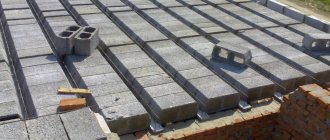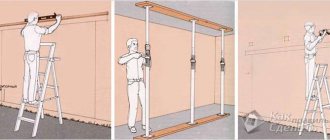When taking an individual approach to planning your apartment, a necessary measure is to move the gas stove within the kitchen or even to another room. Currently, the layout of apartments made according to standard architectural schemes does not always suit the owners. The standards used in building houses do not make it possible to distribute the usable area of the kitchen to the maximum. That is why the transfer of a gas stove and the issues of coordinating this process are currently quite relevant.
However, solving the problem of moving a slab is not so difficult; it is enough to approach it competently and carry out a simple algorithm of actions. This article discusses all the necessary steps, the implementation of which will help to remodel and move the gas stove without violating fire safety rules, which will protect you from unwanted problems associated with this operation in the future.
Moving a gas stove in the kitchen
Do you know if a gas stove can be moved within the kitchen? Then you should carefully read the rules for operating residential premises. Thus, in accordance with Decree of the State Construction Committee of the Russian Federation No. 170 dated September 27, 2003 “On approval of the Rules and Standards for the Technical Operation of Housing Funds,” moving a gas stove within the kitchen, if the length of the gas hose allows, is not the installation of a gas system, and accordingly is not prohibited.
Therefore, the gas stove can be moved independently, as far as the length of the hose connecting the stove with stationary communications allows. In this case, the hose itself cannot be pulled - it must hang freely. Such an operation will not be a redevelopment and therefore does not require approvals.
If it is planned to move the slab, which will result in interference with the gas supply system, then this operation will already be considered a redevelopment and will require the creation of a detailed diagram and coordination with government agencies.
The length of the hose for a gas stove can be no more than 4 meters. This length allows, if necessary, to move the gas stove independently during renovation work or when creating a designer style in the kitchen. Experts do not recommend using metal hoses, as the internal rubber layer wears out quickly and leaks may occur.
Before planning to move the slab, you need to know what is prohibited during redevelopment.
What is prohibited from changing during redevelopment?
In accordance with the requirements of the Housing Code of the Russian Federation, when making changes inside a residential premises, it is prohibited:
- worsen living conditions;
- change or eliminate the ventilation system;
- combine a kitchen with a gas stove with a living space;
- combine the kitchen with the balcony;
- cause damage to the internal structure of the apartment.
Thus, it will be possible to coordinate the movement of a gas stove if officials do not see any of the above points in the provided project.
Requirements for moving a gas stove
The main condition for redevelopment is compliance with all established standards.
They are formulated (detailed) in the following legal acts:
- In the requirements for fire safety of buildings (Federal Law “Technical Regulations on Fire Safety Requirements” dated July 22, 2008 N 123-FZ).
- In the rules for carrying out work in gas distribution systems (“SP 62.13330.2011*. Code of rules. Gas distribution systems. Updated version of SNiP 42-01-2002″ (approved by Order of the Ministry of Regional Development of Russia dated December 27, 2010 N 780).
- In the technical regulations on the safety of buildings and structures (Federal Law “Technical Regulations on the Safety of Buildings and Structures” dated December 30, 2009 N 384-FZ).
- In sanitary and hygienic requirements SanPiN 2.2.1 2.1.1.1278-03.
These documents are approved at the state level and are mandatory for use.
When designing the design of a future kitchen, you should initially prepare communications for installing a gas stove. This must be stipulated in the contract with the developer company, or done with the help of specialists before the delivery of the house.
Among the requirements are the following:
- connecting the gas stove to the gas supply system must be made with one solid hose; extensions or connections with several hoses are strictly prohibited;
- the hose must not cross the gas pipe;
- It is prohibited to place a gas stove outside the kitchen, including moving and installing a gas stove in another room, in the hallway and in the basement;
- there must be free access to gas pipes, all sections of the pipeline must be accessible for visual inspection;
- It is necessary to have a door to the kitchen;
- It is necessary to have a window with a window;
- the gas tap must be located next to the gas stove, but outside the heating zone; it is prohibited to place it above the stove or outside the kitchen;
- a gas tap must be provided;
- the gas pipeline should not cross the electrical cable; there should be a distance of at least 10 cm between them;
- the stove cannot be located near a window; installation in kitchens or rooms without natural light is prohibited;
- the minimum distance from the window or door should exceed 50 cm;
- installing a gas stove next to a refrigerator or any other refrigeration equipment is prohibited (we also recommend that you read the information about placing a refrigerator near a gas pipe);
- each gas appliance requires a separate gas tap, to which the gas pipe must be connected without threaded connections;
- horizontal sections of the gas pipe must be at a height of more than 50 cm from the floor.
Punctual compliance with these requirements primarily ensures the safe operation of gas equipment. Therefore, it is important to comply with them.
The gas pipe must always be accessible for inspection. Walling it up or covering it with a box is prohibited. It is possible to hide it inside the furniture, but there should be easy access to it
It is worth remembering that the gas stove will be the main work surface in the kitchen. Therefore, when remodeling, you should make sure that the approach to it is convenient, and further use is comfortable and safe.
Location of gas pipes
To perform high-quality installation of pipes or move them, you must comply with certain standards. Apartment owners often don’t even imagine that their desire to move something a little or rearrange it a little can lead to a violation of these norms (and there are hundreds of them!)
Among the basic requirements the following can be noted.
- You cannot connect a gas appliance with several hoses; it must be one and solid.
- Gas pipes and stove cannot be placed outside the kitchen.
- Walling up gas pipes is prohibited, and laying them in niches is also impossible. The pipes must be conveniently located, since specialists should not experience difficulty during inspection.
- A room with a gas stove must have a door, so removing the door in the kitchen is only feasible if you are installing an electric stove.
- The gas tap cannot be located directly above the stove, in the heating zone.
- The gas pipeline must not cross the electrical cable.
- The gas tap should always be located near the appliance, not outside the kitchen.
- The geyser, according to the requirements for the room, cannot be located near the window.
Also, the gas pipeline cannot be located in the washing area, and it cannot be located in equipment boxes. If you have two stoves in one kitchen, a gas tap is needed for each of them.
Often the gas pipe spoils the appearance of the kitchen. In the video below you will learn how to hide gas pipes using a built-in kitchen without moving the gas pipe.
Why can't you do it yourself?
This is due to the fact that a gas stove is a priori a source of increased danger. There are strict regulations regulating this issue. The location of the slab is always clearly marked on the BTI plan of the apartment: all changes and corrections in the plan are interpreted as redevelopment.
Moving a gas stove within the kitchen is a redevelopment, even if the displacement of the object is small. But even this question is divided into many small points. If you plan to place the gas stove a little further from its original location, then in this situation, from the permitting documentation, you will only need a certificate from Mosgaz (if you live in the capital).
If a large-scale relocation is planned, then you need to make a project for the transfer of equipment, it is also ordered from Mosgaz. The rules also require an agreed transfer with the Moscow Housing Inspectorate. Residents of other cities should contact the relevant supervisory authorities of their locality.
The procedure for redevelopment
Any significant redevelopment must begin with approval. All. As for gas equipment, this is work with increased danger, so interference and deviation from the standard can be considered a gross violation, and also entail various consequences, including administrative punishment. Therefore, in order to correctly move a gas stove to another place, it is necessary to comply with all the norms prescribed by law.
We should not forget that gas equipment is technically complex and all installation work is extremely dangerous. Only gas company specialists should perform such work.
To begin redevelopment, you need to familiarize yourself with the standards applicable to gas supply systems, which are prescribed by SNiP 41-01-2003. This document, developed back in the Soviet Union, has undergone a number of changes at the present time and regulates the order of gas pipes and the location of the gas stove in the kitchen.
Having natural light in the kitchen is a must. The minimum permissible dimensions of door and window openings are specified in SanPiN 2.2.1 2.1.1.1278-03. They are designed based on the needs of the human visual system
Thus, even in order to move the gas supply to the stove in an apartment, it is necessary to comply with all requirements and necessarily call specialists to carry out the work.
Obtaining permission for redevelopment consists of several stages. Let's take a closer look at them.
Stage 1 - writing an application to move the slab
first you have to write an application for relocation and conduct a survey of the premises for the possibility of redevelopment.
After inspection by a specialist and drawing up a plan for transferring the slab, you will need to contact the BTI. There, a conclusion is issued on the current state of the building, on the basis of which an analysis of the possibility of redevelopment is carried out.
It will also be necessary to purchase a floor plan, which will be used when forming the project.
Stage 2 - obtaining a conclusion and its approval
Next, you should obtain a conclusion from the capital repairs department at the Administration of the locality. This conclusion is based on a document from the BTI.
Then the conclusion should be agreed upon with the fire inspection authority. This is a necessary stage that should not be ignored, since it is this authority that can not only fine, but also completely prohibit redevelopment. For approval, in addition to the conclusion, a redevelopment plan will be needed.
The following documents will be required for approval:
- passport;
- a document confirming ownership of the apartment;
- floor plan of the house;
- planned redevelopment plan;
- contract for redevelopment work;
- extract from the house register;
- written consent for redevelopment of all apartment residents
- BTI technical report;
- an extract from the personal account confirming the absence of debts for utility services.
Preparation of documents and their signing can take from one to three months. But obtaining permission for redevelopment helps in the future not to encounter unwanted problems.
Obtaining permission to redevelop and move a gas stove is a prerequisite. In the absence of permission and the redevelopment has been completed, further sale of the apartment with re-registration will be impossible
Stage 3 - contacting the housing inspectorate
The last stage is contacting the housing inspectorate and the architecture department at the Administration of the locality. These authorities make the final decision on the possibility of redevelopment.
Obtaining permission is a rather complicated operation. However, clearly going through these bureaucratic stages will save you from unnecessary problems in the future.
Regulatory preparation
To avoid problems, study the relevant document - SNiP 2.04.08-87*. It is necessary to arrange natural supply and exhaust ventilation in the room where the stove is located (to organize air exchange). This means that it is impossible to equip a room in a room without a window with working vents, as well as without a ventilation duct with satisfactory exhaust.
It is unacceptable to cut the stopcock from the pipe; this is an integral element of the gas system. You cannot even replace flexible hoses yourself, much less organize the movement or extension of pipes. This is only done by a gas service employee.
But at the stage of negotiations with specialists, clarify what you need to purchase for the transfer. A bellows hose may be necessary. The installers will bring the metal pipes themselves, but their cost is included in the estimate for moving the slab. If you free the kitchen in advance of unnecessary furniture and objects that interfere with the dismantling process, it will be easier for the craftsmen to work. They usually announce all the requirements before coming to the house.
The advent of flexible long gas lines has led to the fact that the internal gas pipeline began to be moved much less frequently. But the issue still remains unique, and gas service representatives regularly face such requests. If you need such a service, don’t even think about unauthorized actions - at the very least, this could result in a fine. But the situation can lead to tragedy, which is much more dangerous.
Even a simple replacement of a kitchen unit, not to mention a larger renovation in the kitchen, often involves moving the stove.
The relocation of the kitchen stove must be approved.
The reason is simple - the type of stove (gas or electric) and its location are always shown on the BTI plan . The exception is apartments in new buildings that are rented without equipment - in this case, the slab may not be indicated on the BTI plan.
The law requires prior approval of any work that leads to differences between the premises and the BTI plan.
On the BTI plan, symbols for a gas and electric stove are drawn to scale, characterizing its dimensions. The BTI plan is in most cases on a scale of 1:200.
A gas stove is designated an Electric stove by a “square with a circle with sticks” is designated by a “square with a lightning bolt”
You can read more about the symbols on BTI plans here.
The most important thing for design is the type of stove in the kitchen.
Moving an electric stove
The easiest way to agree is to move an electric stove, since this is not the most difficult undertaking. When remodeling into apartments equipped with an electric stove, you can combine the kitchen with other rooms without restrictions and create a kitchen niche.
In this example, in the kitchen (11), the stove was shifted slightly, this was reflected in the project, as it should be. Colored symbols show the initial position of the plate and the final position.
During large-scale renovations involving housing redevelopment, the relocation of the electric stove is noted in the redevelopment project as one of the measures.
If construction activities that change the initial layout of the apartment are limited to only moving the electric stove, then this can be coordinated according to the sketch.
Moving a gas stove
If it is necessary to move a gas stove a short distance (within its dimensions), the movement of the stove must be carried out by employees of JSC "MOSGAZ", about which they draw up a report required by the Moscow Housing Inspectorate.
If changes to the apartment are no longer planned, then a sketch of the relocation of the slab is first submitted to MOSGAZ, and then approved by the Moscow Housing Inspectorate as a reconstruction of the premises.
When remodeling an apartment, moving a gas stove is described as one of the types of work with a standard diagram for changing the gas supply attached.
In this example, it can be seen that the gas stove in the kitchen (5) moves a very small distance. In addition, during the redevelopment, the old entrance to the kitchen was blocked, and the new one was made from the living space (3). The example shows a sheet from the project; in this case, there was approval for the project in connection with the expansion of the bathroom. Unfortunately, we will not be able to show a sketch of the redevelopment as an example, since in recent years there have been no requests for such simple objects.
When connecting a gasified kitchen with a living space, it is necessary to install a door with a tight door between them.
You can read more about combining a kitchen with a room in this article.
In the case of moving a gas stove over a considerable distance, everything is agreed unambiguously, taking into account the development of project documentation. The redevelopment project is submitted to JSC MOSGAZ for initial approval. Without the seal of this organization, the Moscow Housing Inspectorate will not approve the submitted documents for the redevelopment of the apartment.
The example shows the state of the apartment premises before and after redevelopment with the relocation of the stove in the kitchen (4) a considerable distance. The dismantling and installation plan clearly shows that the stove was moved to the place previously occupied by the sink.
Interaction with JSC "MOSGAZ"
Reconstruction of gas wiring and rearrangement of gas appliances is carried out by specialists of JSC "MOSGAZ" on the basis of an application submitted through the Internet reception (online application) or the one-stop service "MOSGAZ".
The engineering and technical worker clarifies the details of the application and the scope of the proposed activities, and also advises on the cost and procedure for carrying out the work.
At the predetermined time, specialists will arrive to carry out the work.
Prices for work relevant for the first half of 2021 do not include the cost of materials, which are paid additionally.
Directly at the place of work, a contract is drawn up and payment is made. A certificate of completion of work is issued.
Preparation of documentation
To approve the redevelopment, according to the law, it is required to provide with a package of documents a technical report on the possibility of carrying out the work and a redevelopment project completed by an organization with the approval of an SRO.
Qualified specialists of our organization have been preparing documentation for approval of redevelopment for many years, and can also complete the entire procedure on a turnkey basis.
get acquainted with the already approved redevelopment projects here.
You can ask questions about redevelopment by calling our phone numbers, or by writing a message by email or on the website.
Slab placement
The stove can be positioned so that the approach to it is comfortable and safe. This applies to both standard stoves and modern hobs.
There are several recommendations that are useful to familiarize yourself with before starting redevelopment.
- A gas hob or a separate stove should be placed at an interval of 50 cm from windows or doors. Moving the stove to the window is unacceptable. The prescribed distance cannot be reduced without permission. If a draft occurs, it can lead to the ignition of flammable objects or, on the contrary, it will extinguish the flame with the gas on.
- The stove should be located strictly near the gas distribution and ventilation compartment, with free access to the shutoff valve.
- If you are replacing a gas model with an electric stove, the wiring must be powerful.
- You cannot place a gas stove in the corner near the refrigerator - just like in any other place next to refrigeration equipment.
You should not place a cabinet or cabinet with drawers next to the stove if access to them is difficult for small children. Cases of burns are not uncommon - think through safety logistics.
Refrigerator next to stove
The heat from the stove inevitably forces the refrigerator to work more powerfully. The warmer it is, the more cold the compressor produces. The device itself is technically designed for strict time intervals for auto-shutdown of the compressor. When external temperatures rise, the compressor literally works into overdrive to maintain the desired temperature.
As a result, equipment breaks down faster. And if the stove is on almost all the time, then even modern appliances break down ahead of time. On average, five years after purchasing a refrigerator, if it is operated next to a stove, fatal breakdowns occur. Repairs can be so expensive that owners think about buying new equipment.
Sink next to the stove
Many owners are sure that such a neighborhood is harmless, and even convenient, but this is not so. If you have an electric stove, then the border zone with the sink is always a risk of a short circuit. If you have a gas stove, there is a risk of explosion.
Also, do not discount burns to the skin and mucous membranes caused by boiling oil. If you are washing dishes and meat is being fried on the stove next to you, for example, then water that gets into the pan can actually cause a burn. The greater the distance between the stove and the sink, the more comfortable the cooking process.
What are the consequences of unauthorized transfer of a gas stove?
Penalties following violations cannot be avoided. Moreover, in addition to the amount of the fine, you will also have to pay for an examination to assess the composition of violations. Everything will be decided by the local administrative commission.
Other consequences of rash actions are more dangerous. Fires and even explosions in residential buildings, unfortunately, are not uncommon . In multi-storey buildings, other people's carelessness is aggravated many times over.
How to pack a gas stove when moving
Now let's move on to the process of packing the gas stove. The main goals when transporting this type of household appliances:
- Do not break the oven glass;
- Do not damage the gas supply hoses if they are not removed;
- Do not damage the knobs for turning on/off the gas supply to the burners.
To do this, securely fix the oven door, you can use tape. Also, securely attach the hoses to the back of the stove if they are permanent.
Use bubble wrap to wrap the slab on all sides to prevent damage. If there is no such film, ordinary cardboard will do, which needs to be used to wrap the slab, especially the “fragile” elements listed above, and then secure it with tape or regular packaging film.
Ideas for a miniature kitchen
Thermal insulation materials will come to the rescue. They are glued to the side wall of the refrigerator. They create a protective layer and prevent heating. Such materials are of organic and inorganic nature.
The first include textolite, polystyrene foam, and cork. They are hygroscopic and non-toxic. However, over time they lose their shape and without cladding they look unaesthetic and grayish. If you value the beauty of your kitchen, cover them with decorative film, laminate them or decorate them with a profile.
The second ones are fiberglass, asbestos board, plasterboard, and isolon. They can withstand high temperatures, do not burn and are inexpensive, but they will provide full protection only if the humidity in the room does not exceed 50%.
The selected material is glued using double-sided tape. It will not only fix the thermal insulation layer on the wall of the refrigerator, but also allow it to be removed if necessary.
There is no need to attach a sheet of insulation to the slab. Due to constant heating, the tape will lose its adhesive properties.
An interesting solution is a protective screen made of foil material or mirrors that perfectly reflect heat. Here hooks and magnets act as fastenings. A powerful hood installed in the kitchen will help out. It will absorb the heat from cooking.
Possibilities of association
Recently, solutions for demolishing partitions in the apartment and combining the kitchen and living room in one space have become increasingly popular. Here the owner needs to know that:
- it is not permitted to dismantle, even partially, load-bearing walls;
- it is possible to combine living rooms with a kitchen only if there is an electric stove in it;
- If you have gasified kitchen equipment, in place of the disassembled partition you will need to install sliding structures or protective shutters that replace the door.
It is worth noting that in older houses it is not always possible to replace a gas stove with an electric one due to low-power electrical wiring that does not allow for increased loads. Often, even after changing the wiring inside the apartment, the issue remains unresolved, since the common cables located in Khrushchev and Stalin buildings do not meet modern requirements. In addition, for consumers using electric stoves in gas-connected houses, discounts on electricity consumption are not provided. Therefore, the cost of paying for it will increase sharply.
Unacceptable actions
It should be noted that in his own home, the owner has the right to decide for himself whether the kitchen can be moved to the living room or another room. Here problems can arise only with the presence of natural light in the room and the possibility of providing the necessary communications to the sink and household appliances. Owners of apartments in high-rise buildings will have, in addition to their own wishes, to take into account the rights of neighbors living on the lower level, and also not to forget about their safety and the possible deterioration of living conditions. Unforeseen situations, for example, may arise when sewer pipes located on the floor above leak. Who would like it if fecal waste from a clogged toilet located directly above the kitchen starts dripping onto the kitchen table or stove?
In what cases is it permissible to move the kitchen to another room or change the boundaries of the room, and in what cases is it not? More recently, the owner only had to write a statement indicating that he understood the situation and was deliberately worsening living conditions. For example, in a one-room apartment, during redevelopment, the area of the kitchen area was increased by reducing the bathroom by moving the partition. In this case, the kitchen fell under the “wet” zone of the neighbors, which is prohibited by the new rules. But previously, officials approved such a transfer on the condition that the owner undertakes to inform the potential buyer about the problem when selling the apartment.
Currently, sanitary and building codes clearly state when moving the kitchen even by a meter is prohibited under any conditions:
- in a one-room and one-level multi-room apartment in multi-storey buildings, it is not allowed to move the kitchen under the bathrooms, showers and bathrooms located on the floor above. An exception is an apartment located on two levels or on the top floor;
- You cannot move the kitchen to the living room or another room if there are residential premises underneath them, as they will automatically become non-residential. This paragraph does not apply to apartments occupying the first and second floors, if there are no areas under them intended for living;
- It is strictly forbidden to arrange a kitchen in a room that does not have a window opening with an opening sash, if a gas stove is used for cooking. It will need to be replaced with an electric one.
Experts do not recommend moving the kitchen if, during its redevelopment, the location of utility networks will have to be significantly changed, as well as if there are significant violations of their technological diagrams. Firstly, such a project may not be approved by the authorities, and secondly, it will most likely require significant material investments.
Mandatory conditions for transfer approval
As mentioned above, moving a gas stove requires approval, and in some cases the transfer is not possible at all.
Thus, it is forbidden to create a kitchen in any other living room. If you do not coordinate the redevelopment, then all this can threaten with fines and litigation, as a result of which, if the court decisions are not followed, you could lose the apartment altogether. Therefore, even if you are planning to move the gas supply to the household gas stove in the apartment, this step must be agreed upon.
We recommend that you familiarize yourself with the penalties for violating safety rules when using gas equipment.
A range hood is a necessary element in a kitchen where a lot of cooking is done. But when installing it, it is necessary to comply with a number of conditions: compliance with the established distances from the stove to the hood, compliance of the hood power with the kitchen area
However, there are a couple of redevelopment options that are usually approved and can be completed.
To transfer a gas stove to another non-residential room, several conditions must be met:
- the room where the gas stove will be located must be isolated from other living spaces;
- natural light is required;
- the gas pipe leading to the stove should not be routed through residential premises;
- connecting the ventilation duct from the main house exhaust ventilation.
Thus, fulfilling these requirements will guarantee that the redevelopment project will be approved.
It is worth noting that in apartments located on the first and second floors, where there are no other living quarters below, it is possible to move a gas stove to any other room, the main thing is that the conditions written above are met.
Location of gas pipes
To perform high-quality installation of pipes or move them, you must comply with certain standards. Apartment owners often don’t even imagine that their desire to move something a little or rearrange it a little can lead to a violation of these norms (and there are hundreds of them!)
Among the basic requirements the following can be noted.
- You cannot connect a gas appliance with several hoses; it must be one and solid.
- Gas pipes and stove cannot be placed outside the kitchen.
- Walling up gas pipes is prohibited, and laying them in niches is also impossible. The pipes must be conveniently located, since specialists should not experience difficulty during inspection.
- A room with a gas stove must have a door, so removing the door in the kitchen is only feasible if you are installing an electric stove.
- The gas tap cannot be located directly above the stove, in the heating zone.
- The gas pipeline must not cross the electrical cable.
- The gas tap should always be located near the appliance, not outside the kitchen.
- The geyser, according to the requirements for the room, cannot be located near the window.
Also, the gas pipeline cannot be located in the washing area, and it cannot be located in equipment boxes. If you have two stoves in one kitchen, a gas tap is needed for each of them.
Often the gas pipe spoils the appearance of the kitchen. In the video below you will learn how to hide gas pipes using a built-in kitchen without moving the gas pipe.
Transfer approval
If you are planning to move the stove, consultation with specialists from the gas service of your city is required. Any installation and dismantling work is carried out by specialists authorized for these actions. The transfer will not be carried out without agreement with the gas workers!
There are certain rules on how to obtain permission to move.
- Contact specialists by phone, they will give an initial consultation, after which you will probably have to fill out an application to transfer the equipment.
- After the application is written and submitted to the relevant structures, the approval process is launched. Based on your application, a specialist will come to your home (time to be determined).
- He inspects the kitchen, you voice your wishes regarding how far you are going to move the stove from the main installation location. If you have previously studied the requirements and standards for gas pipeline installation, many points are omitted.
- The specialist approves the final scheme for transferring the slab and draws up an estimate. The paperwork is handled by the organization that will move the slab. If the homeowner does not agree, no work is carried out.
- If the transfer conditions proposed by the specialist suit you, then using the receipt provided you need to pay for the services and agree on the day of the transfer.
As for the timing, the approval procedure will take 5-10 days. The problem is postponed for a long time if the apartment owners do not agree to the proposals of the gas service employees. But a compromise will have to be found, and it always fits within the framework of the standards. The distance from the wall to the slab cannot be reduced to circumvent the requirements. Unauthorized transfer is a violation of the law; fines cannot be avoided in this case.
Regulatory preparation
To avoid problems, study the relevant document - SNiP 2.04.08-87*. It is necessary to arrange natural supply and exhaust ventilation in the room where the stove is located (to organize air exchange). This means that it is impossible to equip a room in a room without a window with working vents, as well as without a ventilation duct with satisfactory exhaust.
It is unacceptable to cut the stopcock from the pipe; this is an integral element of the gas system. You cannot even replace flexible hoses yourself, much less organize the movement or extension of pipes. This is only done by a gas service employee.
But at the stage of negotiations with specialists, clarify what you need to purchase for the transfer. A bellows hose may be necessary. The installers will bring the metal pipes themselves, but their cost is included in the estimate for moving the slab. If you free the kitchen in advance of unnecessary furniture and objects that interfere with the dismantling process, it will be easier for the craftsmen to work. They usually announce all the requirements before coming to the house.
The advent of flexible long gas lines has led to the fact that the internal gas pipeline began to be moved much less frequently. But the issue still remains unique, and gas service representatives regularly face such requests. If you need such a service, don’t even think about unauthorized actions - at the very least, this could result in a fine. But the situation can lead to tragedy, which is much more dangerous.
Moving a gas stove to another place is not a rare situation, since when planning a room individually, owners often need to move the stove from its designated location and move it to a more convenient one. This may be due to design nuances or non-standard arrangement of the kitchen space. In an apartment, moving the stove outside the kitchen is prohibited according to regulations, and if you want to place it in another place, then even a small displacement must meet safety requirements.
Transfer of communication
The transfer of a gas pipe can only be carried out with appropriate approval from the gas service and the project. All reconstruction work on gas equipment can only be carried out by specialists with the appropriate clearance groups.
Moving the kitchen to another room may require moving other pipes: hot water supply, heating, water supply and drainage.
For some reason, this is the last thing owners remember, although this factor is often critical when remodeling a kitchen. All engineering communications of the apartment must be arranged in such a way as not to interfere with the normal and safe operation of gas equipment.
Features of moving the kitchen into the room
Before swapping a kitchen with a room in a new building, weigh the pros and cons. Especially if you consider the possibility of selling a converted apartment. A potential buyer may not like your implemented plan. For example, it will seem to him if the room where the kitchen is is uncomfortable and too small.
Next, you should estimate the amount of work to transfer communications
Yes, redevelopment will seriously hit your wallet, since it is important to comply with all technical nuances
Firstly, you will have to stop using a gas stove and buy an electric one, since it is not possible to move the gas pipes.
Secondly, the transfer of plumbing and sewerage should be entrusted to a competent specialist. He will help you figure out the installation of additional pipes. It is likely that you will need to raise the floor or lower the ceiling in order to extend all communications. In addition, sewer pipes require a slope of several degrees. If you cannot provide it, then you are faced with the purchase of a sewer pump.
Thirdly, do not forget about the ventilation pipes. With their help, all unpleasant odors will not accumulate in the room. Ventilation will have to be drawn through the entire apartment; it may be necessary to install fans and punch holes in load-bearing walls (for which you also need to obtain permission).
In other words, even if you manage to agree on a redevelopment plan, the amount of work is quite large and difficulties may arise.
Current legislation on moving a gas stove
Moving a gas stove (GS) in a gasified kitchen during remodeling or replacing it with a hob after the fact are “standard” procedures carried out during renovation, after purchasing a new kitchen unit, etc. Disputes about the status of such work from the point of view of legal aspects do not subside. Some call them reconstruction, others consider them re-planning, and others consider them a formality that does not require legalization. In fact, Russian legislation clearly classifies the transfer of a gas stove from place to place, even within the kitchen, as redevelopment. With all that it implies. And that's why.
The technical conditions (TU) of gas equipment, the rules for its installation and movement are clearly stated in the building codes and regulations, determined by the provisions of laws and regulations:
- Housing Code of the Russian Federation (Articles 25-29);
- PM Resolution No. 840, which replaced the outdated 508 (Appendix 1, clause 2.2.1);
- Resolution of the State Construction Committee of the Russian Federation No. 170 dated September 27, 2003;
- SNiP 42-01 and SP 42-101, approved in 2002 and 03, respectively;
- By Order of the VO "Rosstroygazifikatsiya" No. 86-P, approved on April 26, 1990;
- Requirements of internal documents of State Unitary Enterprise "Mosgaz", etc.
Where to go?
Where the owner should go to replace a gas-powered home appliance, a specialized service or a certified company, is up to him to decide. Private companies usually offer services at a more affordable cost, the technicians arrive quickly, but according to all the rules, after installing a new gas appliance, it must be registered in Gorgaz. Specialists from licensed companies also mark the installation in the device’s passport, but many owners still prefer to immediately contact the city gas service in order to avoid any claims from employees during scheduled inspections .
Here are approximate prices from the Mos-Gaz.ru website: calling a locksmith - 480 rubles; connecting a gas stove - 1180 rubles, excluding materials. All materials are available: bellows flexible liner from 300 to 1500 rubles; dielectric from 150 to 450 rubles. The final cost of the work is determined by the mechanic according to the price list.
USEFUL INFORMATION: How to properly install a hood over a gas stove?
Fines and liability for unauthorized removal of a slab
It is worth noting that moving a gas stove without approval is quite difficult, because licensed gas workers simply will not agree to unapproved work.
But if it works out, then you cannot avoid fines: both from the gas service and from the BTI. In addition, you may be required to cover the costs of the examination.
IMPORTANT!
Carrying out gas work yourself may cause a fire or explosion! You risk not only your safety, but also the health of others. If the fact of harm to the health of other people is proven, then punishment is possible, including criminal liability .
How are violators identified?
You cannot, at your own discretion, that is, without prior approval from the gas service, unauthorizedly connect any equipment that consumes industrial gas in a private house, separate apartment or apartment complex. The illegal introduction of such technology entails administrative or criminal liability, depending on the nature of the consequences.
Employees of the competent authorities systematically participate in activities aimed at identifying and punishing consumers of natural fuels who have not registered in accordance with the general procedure. The fact of the violation emerges during the examination of the gas pipes through which fuel is delivered to the house, and the presence of connections to other pipes is revealed. The reason for the inspection may be a complaint from citizens who have accused someone of illegally using gas.











